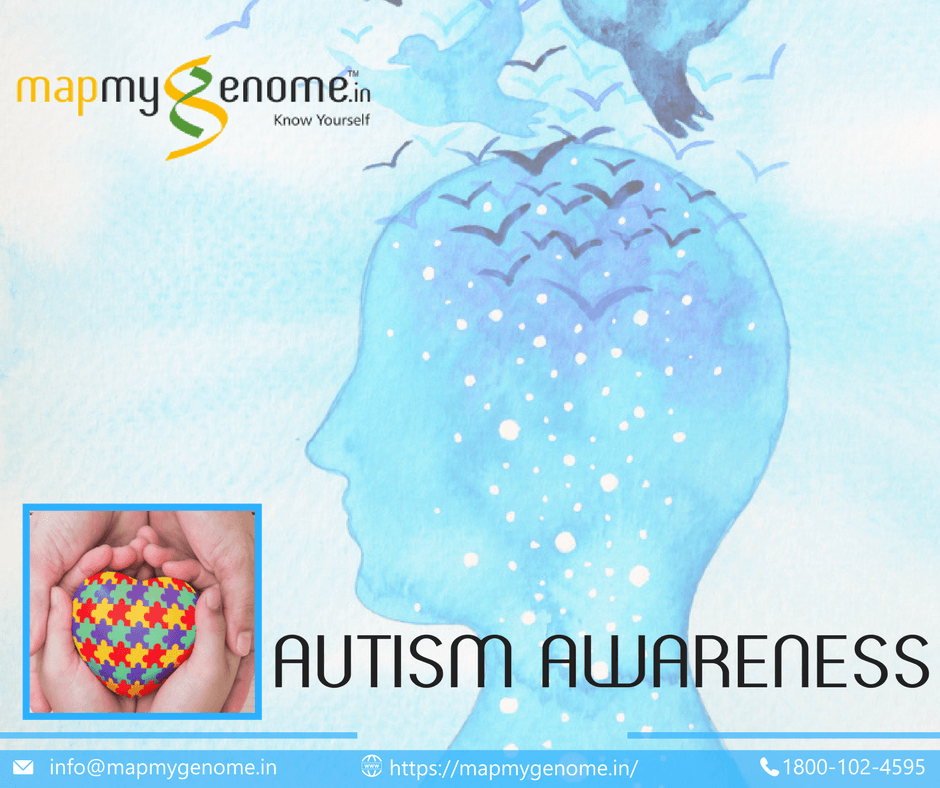
In my experience as a genetic counselor, I have seen many families who have a child with Autism.This past week has been especially significant in terms of the number of parents I’ve spoken to and I could not pass up the opportunity to write about it today, on World Autism Awareness Day.
We know Autism to be a part of a clinically heterogeneous group of disorders collectively referred to as “autism spectrum disorders” (ASD). What stands out amongst these disorders, are a few shared common features”
- Impaired social relationships
- Impaired language and communication, and
- Repetitive behaviors or a narrow range of interests
The signals that can identify children with autism at an earlier age are silent- there are usually no major medical emergencies that require treatment, hospitalization or surgery. This is perhaps the toughest aspect about establishing a diagnosis of Autism.That most children develop symptoms gradually. The science has been clear for quite some time now in knowing that early intervention is crucial in improving the outlook of children with autism. The onus of early detection, however, rests largely on parents. Which is why I would like to emphasize 4 ways that parents can be active participants in monitoring and being advocates for their children.
First, monitor your child’s growth and development. It is important to monitor growth beyond height and weight milestones. Monitoring social, emotional, and cognitive milestones can be a powerful way to spot the problem early on.
Second, act if you have concerns. While each child develops at their own pace and that alright, share your concerns with your pediatrician if your child appears to not meet the milestones for his or her age, or you suspect a problem.
Third, be your child’s advocate. If your concerns are addressed with asking you to wait and watch, it is important to communicate that this could lead to loss of a valuable window for intervention and improvement. In order to develop skills in an area of delayed milestone, your early intervention and targeted treatment is key. Be an advocate and push for an assessment. A web tool called MCHAT is a good place to start and comprises 20 questions that can help you determine if professional evaluation is needed.
And finally, trust your instincts. Unfortunately, sometimes, doctors may miss red flags or underestimate problems. Trust your parental instincts, be persistent, and schedule a follow-up appointment if you have concerns. Most importantly, do not hesitate to ask for a referral to a child development specialist.
Pay special attention to regression of communication skills. 30% of children with Autism have a “regressive” onset usually between ages 18 and 24 months and any loss of gestures, babbling, waving bye-bye, etc., are red flags for Autism.
After a long, difficult and uncertain diagnostic odyssey, the question that remains is: What caused my child’s autism? This is the beginning of a lesser-spoken-about Odyssey for parents who have a child with Autism that we don’t yet have many answers to. A causal explanation is important for many reasons including understanding, health care management, and recurrence risks for a future pregnancy. Autism has many causes and this was established after the molecular basis of Rett syndrome was discovered in 2006. Since then, Autism has been documented in hundreds of syndromes with multiple causes, outcomes, and treatments. Currently, an etiology can be identified for between 15% and 20% of individuals with autism; in the others the cause remains unknown. For the vast majority of cases of unknown cause, parents are left with unanswered questions about management and recurrence risks. These tend to be the most unasked and unanswered questions, but we do know that the recurrence risk for Autism can range from as low as 1% to as high as 50%. Be sure to discuss this in more depth with a genetic counselor to see how these numbers may apply to you and your family.
Which finally brings us to the reason why diagnosis and testing is important- management. For management, the good news is that, regardless of status of cause (known or unknown), management of Autism revolves around educational, behavioral, and medical therapies to increase the development of conversational language and social interactions, and reduce repetitive self-stimulatory behaviors, tantrums, aggressiveness, and self-injury. The key to effective therapy and management is early individualized intensive training (at school or at home) in a safe, planned and predictable environment. And children treated early can usually be taught, to varying degrees, to communicate, recognize and respond to social interactions, develop imaginative play, and curb all-consuming repetitive self-stimulatory behaviors.
The bottomline line is that the outlook is good for children diagnosed at an early age because interventions can be applied sooner, and at an age when children are most responsive to therapies. Awareness and monitoring is key.





